

Project-Based Learning Packs. Why Use Project-Based Learning Packs Project-Based Learning (PBL) Packs provide an instructional framework for students to gain essential language arts and content-area knowledge.
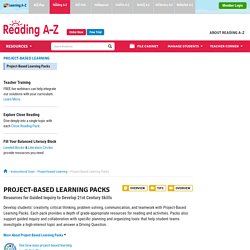
At the center of each pack is a Driving Question, which gives students' investigations purpose and structure and helps them to understand what they are learning and why it is important. The wealth of resources provided with each pack saves teachers time by collecting a core set of materials necessary to support project-based learning as well as ensures team investigations stay on track and individual students learn grade-appropriate content. How to Use Project-Based Learning Packs. 8 Things I Learned My First Year Of Teaching With Project-Based Learning - 8 Things I Learned My First Year Of Teaching With Project-Based Learning by Rachelle Dene Poth My first year of teaching with project-based learning provided as much learning for me as it did my students.
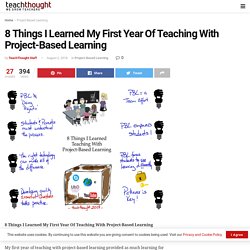
Each year when I head back to my classroom in the fall, I have many ideas of new methods, new tools, and some changes that I want to make in my classes. These changes and ideas are the result of attending summer conferences, reading new books, and maybe the most helpful, student feedback that I review over the summer. The biggest change I wanted to make this year was to have my students really engage in Project-Based Learning.
Resources for Assessment in Project-Based Learning. Project-based learning (PBL) demands excellent assessment practices to ensure that all learners are supported in the learning process.
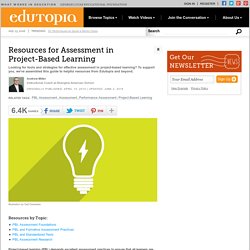
With good assessment practices, PBL can create a culture of excellence for all students and ensure deeper learning for all. We’ve compiled some of the best resources from Edutopia and the web to support your use of assessment in PBL, including information about strategies, advice on how to address the demands of standardized tests, and summaries of the research. PBL Assessment Foundations 10 Tips for Assessing Project-Based Learning (Edutopia, 2011) This comprehensive guide from Edutopia goes over many best practices for assessment, including authentic products, good feedback, formative assessment, and digital tools. Stuff. Teacher Collaboration: Matching Complementary Strengths.
Spreading Best Practices Schoolwide Teacher collaboration at Wildwood helps to diffuse conflicting adult dynamics, fosters a collaborative culture that puts the students' learning first, and turns a teacher's best practice into a schoolwide best practice.
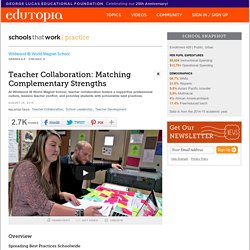
Teacher collaboration is a top priority at Wildwood. Here is what works for them: Making the Most Out of Teacher Collaboration. Nose to the grindstone, I prepared for Monday, Tuesday, Wednesday, and Thursday -- what to teach, what to test, and how to learn.

I gave it my best shot, alone. I was the only Spanish teacher. What did I have to say to teachers of other disciplines? Other than collegial greetings, I did not seek them out. How stupid could I have been! Flipped Classroom Dos, Dont's, Pros & Cons. Mind Mapping from a Dyslexic Point of View. This week we got an inside look at how those with dyslexia can benefit from Mind Mapping, thanks to iMindMap user, David Matkin.
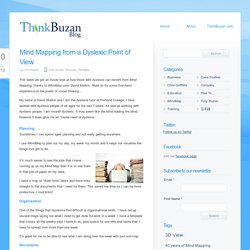
Read on for some first-hand experience of the power of visual thinking… My name is David Matkin and I am the dyslexia tutor at Portland College. I have worked with dyslexic people of all ages for the last 7 years. As well as working with dyslexic people, I am myself dyslexic. It may seem like the blind leading the blind, however it does give me an “inside view” of dyslexia.Planning Sometimes I can spend ages planning and not really getting anywhere. The Flipped Classroom. Flipped Classroom info. The Flipped Classroom. Formative assessments. Methods of Differentiation in the Classroom. It’s a term that every teacher has heard during their training: differentiation.
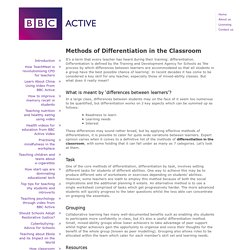
Differentiation is defined by the Training and Development Agency for Schools as ‘the process by which differences between learners are accommodated so that all students in a group have the best possible chance of learning’. In recent decades it has come to be considered a key skill for any teacher, especially those of mixed-ability classes. But what does it really mean? What is meant by ‘differences between learners’? Differentiation.